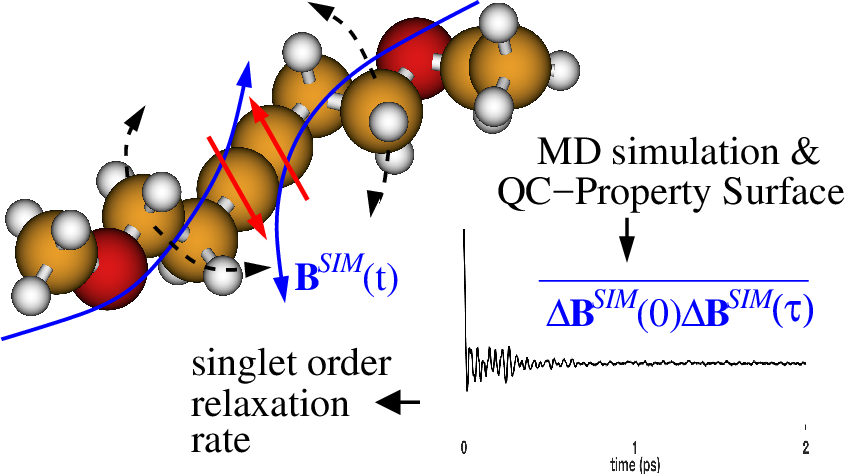


Nuclear magnetic resonance (NMR) and imaging (MRI) are unmatched tools in chemistry, materials science and medicine for determining molecular structures, monitoring structural transformations, diagnostics and in probing dynamics at timescales relevant for biological systems. This information is contained in the measurable NMR relaxation times.
We work on the microscopic interpretation of relaxation times by merging molecular dynamics simulation (MD) and quantum-chemical calculations (QC) of the relevant spin system (http://dx.doi.org/10.1039/C6CP08394C and figure 1). In particular this leads to one computational bottleneck due to the large amount of QC calculations required, each of a high spatial dimensionality. To circumvent this bottleneck machine learning methodology is under development in order to invest QC computational resources wisely.
We are interested in how paramagnetic molecules influence the NMR relaxation, in particular in the case of spin-pairs capable of forming long-lived nuclear spin states.
